#Robert J Kuntz
Text
316. Robert J. Kuntz and Gary Gygax - WG5: Mordenkainen’s Fantastic Adventure (1984)

Although this came out in 1984, it harkens back to much earlier stage in the development of AD&D. In fact, it’s a part of the earliest possible iteration of D&D, having been developed by Gary Gygax in the early 1970s as part of his Greyhawk campaign. It’s from his campaign that the whole of the game was then developed.
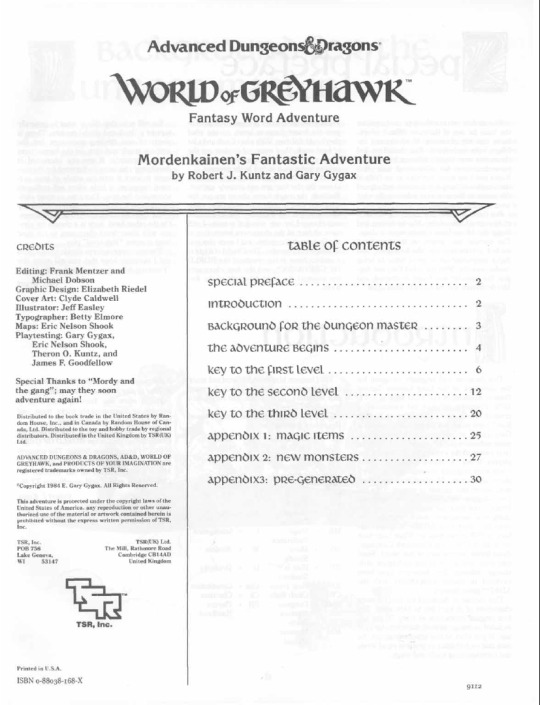
As can be seen from the title, this adventure focuses on Mordenkainen, but it also brings in his companion Bigby and a couple of other characters that were part of the Kuntz/Gygax home game.

As was also typical of that period the adventure is very much a kind of funhouse, hack and slash affair. Here Mordenkainen and friends hear of a couple of impenetrable doors underground in the abandoned Maure Castle. Managing to go through the doors they get into the several levels of a dungeon which eventually culminate with a demonic “boss fight”. Fun stuff.

8 notes
·
View notes
Photo
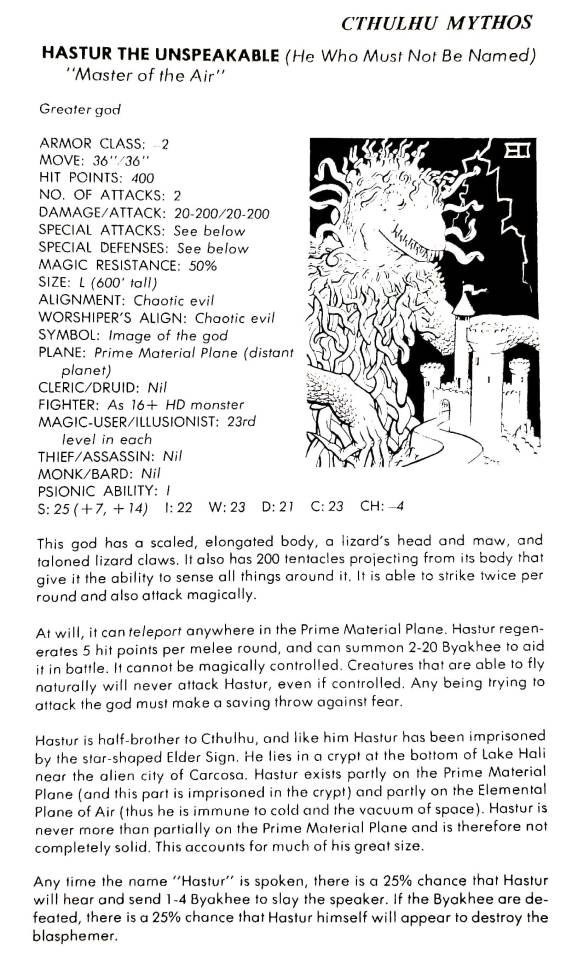

Image description: two scans from the 1980 edition of the TSR Advanced Dungeons and Dragons sourcebook Deities and Demigods. The first is of the text accompanying the entry for Hastur, a full transcript of which is under a readmore link. The second is a close-up of the illustration and depicts a lizard like creature covered in tentacles behind a castle. It is considerably larger than the castle and there is a bolt of lightning in the background. The upper right corner has a stylized signature of the letters E and O, indicating that Erol Otus is the illustrator of this particular image.
End image description.
My dad owns a copy of the Deities and Demigods book from before the copyright strike, and I haven’t seen any scans of Hastur from it around tumblr so. Here it is! The whole thing is very influenced by August Derleth’s interpretation of the Cthulhu Mythos, and I have Opinions about that, but this is specifically where the “don’t say Hastur’s name more than four times or he’ll come Get You” thing comes from, which I think is a very neat bit of history and trivia!
One other thing I find interesting is that there is no mention of The King in Yellow (the play) in this section. There is also no mention of the Yellow Sign, Cassilda, or Camilla, though Lake Hali and Carcosa are mentioned as part of an “alien planet”.
The book is credited to James M. Ward and Robert J. Kuntz, and edited by Lawrence Schick.
The illustrations are credited to the following: Jeff Dee, Erol Otus, Eymoth, Darlene Pekul, Paul Jaquays, Jim Roslof, David S. LaForce, David C. Sutherland III, Jeff Lanners, and D. A. Trampier.
Text transcript is as follows:
HASTUR THE UNSPEAKABLE (He Who Must Not Be Named) “Master of the Air”
Greater God
ARMOR CLASS: -2
MOVE: 36″/36″
HIT POINTS: 400
NO. OF ATTACKS: 2
DAMAGE/ATTACK: 20-200/20-200
SPECIAL ATTACKS: See below
SPECIAL DEFENSES: See below
MAGIC RESISTANCE: 50%
SIZE: L (600′ TALL)
ALIGNMENT: Chaotic evil
WORSHIPER’S ALIGN: Chaotic evil
SYMBOL: Image of the god
PLANE: Prime Material Plane (distant planet)
CLERIC/DRUID: Nil
FIGHTER: As 16+ HD monster
MAGIC-USER/ILLUSIONIST: 23rd level in each
THIEF/ASSASSIN: Nil
MONK/BARD: Nil
PSIONIC ABILITY: I
S: 25 (+7. +14) I: 22 W: 23 D: 21 C: 23 CH: -4
This god has a scaled, elongated body, a lizard’s head and maw, and taloned lizard claws. It also has 200 tentacles projecting from its body that give it the ability to sense all things around it. It is able to strike twice per round and also attack magically.
At will, it can teleport anywhere in the Prime Material Plane. Hastur regenerates 5 hit points per melee round, and can summon 2-20 Byakhee to aid it in battle. It cannot be magically controlled. Creatures that are able to fly naturally will never attack Hastur, even if controlled. Any being trying to attack the god must make a saving throw against fear.
Hastur is half-brother to Cthulhu, and like him Hastur has been imprisoned by the star-shaped Elder Sign. He lies in a crypt at the bottom of Lake Hali near the alien city of Carcosa. Hastur exists partly on the Prime Material Plane (and this part is imprisoned in the crypt) and partly on the Elemental Plane of Air (thus he is immune to cold and the vacuum of space). Hastur is never more than partially on the Prime Material Plane and is therefore not completely solid. This accounts for much of his great size.
Any time the name “Hastur” is spoken, there is a 25% chance that Hastur will here and send 1-4 Byakhee to slay the speaker. If the Byakhee are defeated, there is a 25% chance that Hastur himself will appear to destroy the blasphemer.
#cthulhu mythos#hastur#the king in yellow#dnd#carcosa#advanced dungeons and dragons#deities and demigods
106 notes
·
View notes
Text
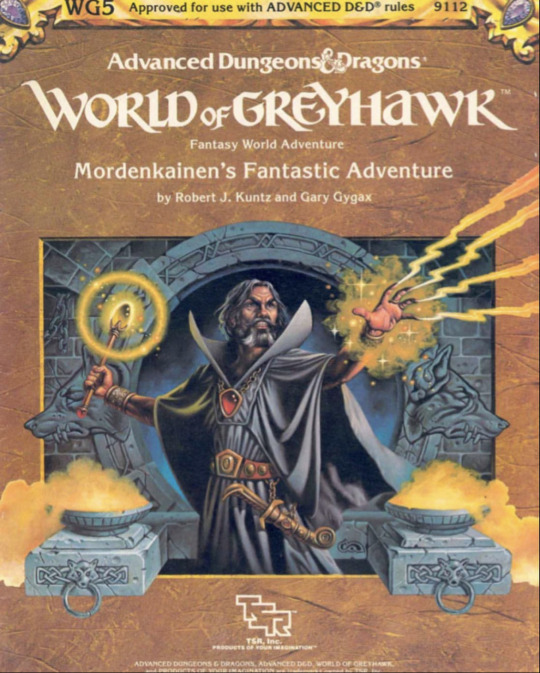


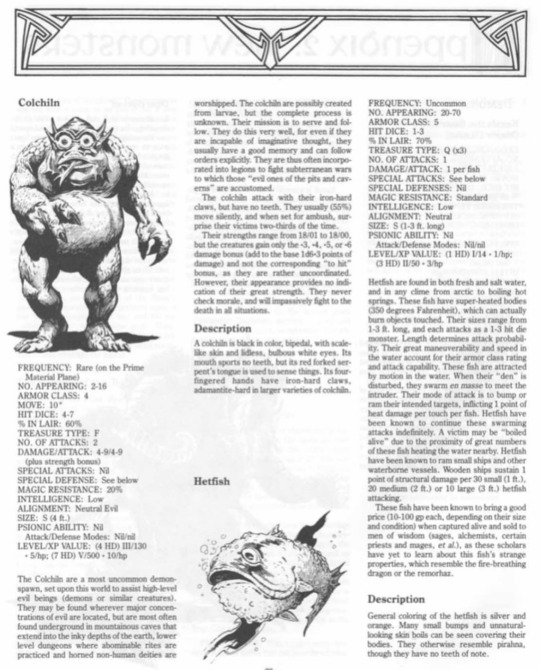
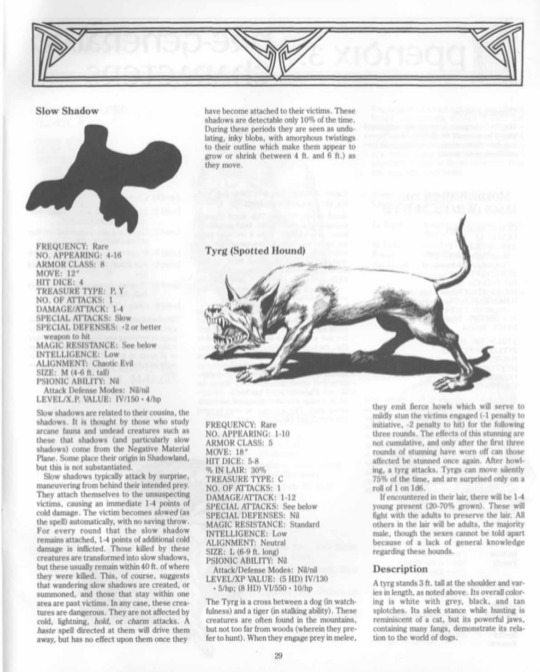
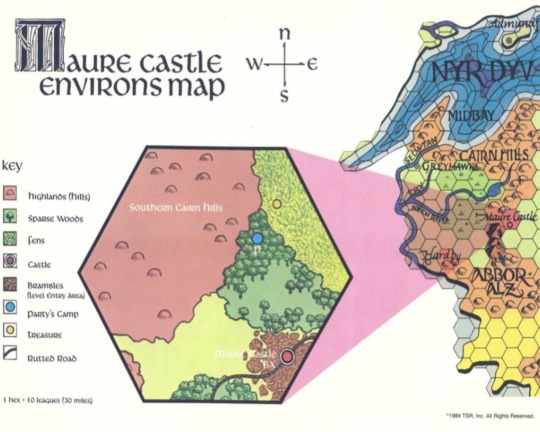
Come along and ride on Mordenkainen’s Fantastic Adventure. WG5, written by Robert J Kuntz and Gary Gygax, was originally made for play in the World of Greyhawk setting, and was later adapted for 3e rules in Dungeon Magazine 112 as Maure Castle.
The cover art was done by Clyde Caldwell, with Jeff Easley taking on the interior art. It’s a pretty cool adventure that features characters from the authors’ original Greyhawk campaign, and accommodates pretty high level play. The module begins when the players are informed that a pair of impassable doors has been discovered under the abandoned Maure Castle. Suspecting that these iron doors lead to fantastic treasures, many have tried to gain access, and all have failed. Once the PCs gain entry, they make their way through a three level dungeon, each with its own BBEG, culminating in a a nice boss battle.
62 notes
·
View notes
Photo
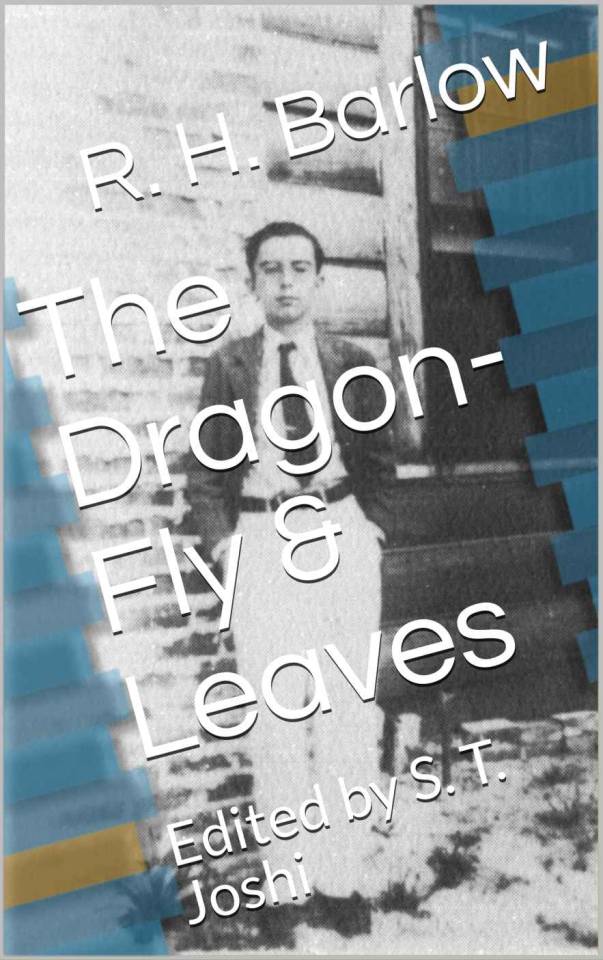
R.H. Barlow: The Dragon-Fly & Leaves, edited by S.T. Joshi, Sarnath Press, 2020. Info: amazon.com.
As a boy, Robert H. Barlow (1918–1937) became fascinated with the genres of fantasy, horror, and science fiction. Striking up an early friendship with H.P. Lovecraft, Barlow got in touch with a number of other leading figures in the field, including Clark Ashton Smith, A. Merritt, Donald Wandrei, and C.L. Moore. Joining the National Amateur Press Association, Barlow issued two fine issues of a paper called The Dragon-Fly in 1935 and 1936, using his own printing press and including the work of some of the authors he had corresponded with. In 1937 and 1938, he published two large issues of a mimeographed magazine, Leaves, that included previously unpublished work by Lovecraft, Moore, and many other writers, including some of his own fine stories. These issues are fabulously rare, but they have now been reprinted in a reset edition that displays Barlow’s precocity and his keen editorial skills. A bountiful mix of fiction, poetry, essays, and commentary, these issues of The Dragon-Fly and Leaves constitute some of the most substantial contributions to the imaginative literature of their time.
Contents:
Introduction – S.T. Joshi
Dragonfly No. 1 (October 15, 1935)
A Dream – R.H. Barlow
Expectancy – Elizabeth Toldridge
On Writing in Bed – J. Vernon Shea, Jr.
The Epigrams of Alastor – Clark Ashton Smith
Fragment of a Letter to a Young Poet – Ernest A. Edkins
First Scylla – August W. Derleth
Obiter Dictum – R.H. Barlow
The Sea: Yesterday and Today – Eugene B. Kuntz
Bizarres – E.A. Edkins
Dragonfly No. 2 (May 15, 1936)
Pursuit of the Moth – R.H. Barlow
Locusts and Wild Honey – Elizabeth Toldridge
What Is Poetry? – Ernest A. Edkins
Four Playwrights – J. Vernon Shea, Jr.
Arthur Wing Pinero.
Eugene O’Neill.
Noel Coward.
Maxwell Anderson.
Pertinence and Impertinence – Clark Ashton Smith
Bluebirds – August W. Derleth
Leaves No. 1 (Summer 1937)
The Story of the Princess Zulkaïs and the Prince Kalilah – William Beckford and Clark Ashton Smith
Conclusion to Wm. Beckford’s Story of Princess Zulkais & Prince Kalilah – Clark Ashton Smith
With a Set of Rattlesnake Rattles – Robert E. Howard
Cats and Dogs – Lewis Theobald, Jun. [i.e., H.P. Lovecraft]
Mist – Elizabeth Toldridge
Dead Houses – Edith Miniter
Sandalwood – Clark Ashton Smith
The Beautiful City – Frank Belknap Long, Jr.
The People of the Pit – A. Merritt
Obiter Scriptum, Or, Succotash without Seasoning – R.H. Barlow
H. P. Lovecraft – Elizabeth Toldridge
Ephemera – Elizabeth Toldridge
The Panelled Room – August W. Derleth
It Will Be Thus – Arthur H. Goodenough
Three Stories – Donald Wandrei
The Twilight of Time
On the Threshold of Eternity
A Legend of Yesterday
Autumnus—and October – Arthur H. Goodenough
Leaves No. 2 (1938)
Were-woman – C.L. Moore
Winter Night – Vrest Teachout Orton
The Woman at the Window – Donald Wandrei
From a Letter – H.P. Lovecraft
Collapsing Cosmoses – [H.P. Lovecraft with R.H. Barlow]
Haunted – Howard Davis Spoerl
The Faun – Samuel Loveman
Flower of War – Henry George Weiss
Three Fragments – H.P. Lovecraft
I: Azathoth
II: The Descendant
III: The Book
O Is There Aught in Wine and Ships? – Frank Belknap Long, Jr.
Futility – Frank Belknap Long, Jr.
The Demons of the Upper Air – Fritz Leiber, Jr.
In Defense of Dagon – H. P. Lovecraft
The Unresisting – Jonathon Lindley
March – Jonathon Lindley
The Tree-Man – Henry S. Whitehead
Thule – Th. Weelkes
A Checklist of the Published Weird Stories of Henry S. Whitehead
Origin Undetermined – R.H. Barlow
Colophon or Epitaph
10 notes
·
View notes
Text
Village election March 21st in Monroe County
The voter turnout in these elections would be disgusting but for the fact that most of these elections go unnoticed and are run unopposed.
* Ran unopposed
Churchville (March 21st Election) (64 people voted 4 years ago)
Village Trustee (2 of 4) (4 yr)
*Hon Scott A Cullen
*Hon John T Hartman
Honeoye Falls (March 21st Election) (68 people voted 4 years ago)
Mayor (4 yr) (appoints clerk)
*Hon Richard B Milne
Trustee (2 of 4) (4 yr)
*Hon James F Alfieri
*Hon Shari F Stottler
Village Justice
*Hon Sheldon W Boyce Jr
Pittsford (March 21st Election) (465 people voted 4 years ago)
Mayor (4 yr) (Appoints Clerk)
Hon Robert C Corby (D)
Trustee (2 of 4) (4 yr)
Hon Linda B Lanphear (D)
Hon Frank R Galusha (R)
Scottsville (March)
No seats this year
Spencerport (March 21st Election) (156 people voted 2 years ago; 280 people voted 4 years ago)
Mayor (2 yrs)
*Hon Gary J Penders
Trustee (2 of 4) (4yr)
Hon Charles R Hopson
*Hon Raymond C Kuntz Jr
Webster (March 21st Election) (information 2013 not found)
Mayor (4 yr) (Appoints Clerk)
Hon John J Cahill
Trustee (2 of 4) (4 yr)
Hon Gerard Ippolito Jr
Hon Darrell D Byerts
3 notes
·
View notes
Photo
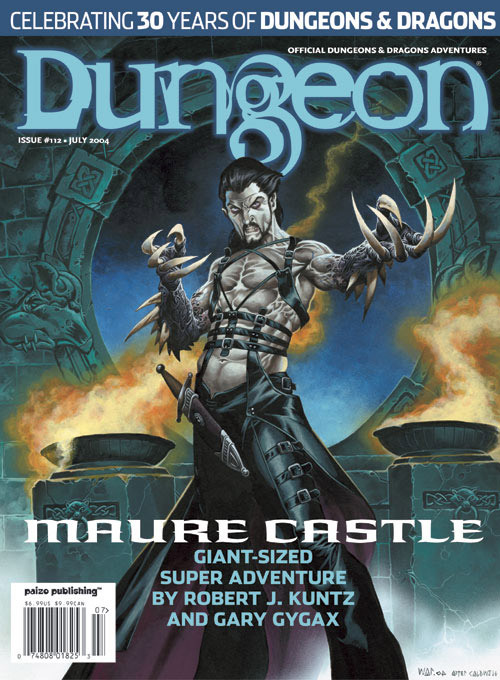
Dungeon Magazine #112
Cover by Wayne Reynolds
“Maure Castle” by Robert J. Kuntz & Gary Gygax
0 notes
Text
Sensor Sweep: 9/30/2019
Weapons (Ammoland): On the Internet, and in print, many people claim that pistols lack efficacy in defending against bear attacks. Here is an example that occurred on freerepublic.com: “Actually, there are legions of people who have been badly mauled after using a handgun on a bear. Even some of the vaunted magnums.”
OK, give us a few examples. As you claim “legions”, it should not be too hard. I never received a response.
Fiction (Walker’s Retreat): As the book just went live in paperback, product linking will take a few days, but both versions are meant to be linked. I’ve set it such that any paperback purchase gets you the ebook for free. The same applies to other features such as Look Inside.
BACKERS! I’ve ordered your copies. They’re due to arrive at my house between the 8th and the 16th. I will begin turning around and sending them to you as soon as they arrive.
RPG (RPG Pundit): Lion & Dragon contains a bestiary chapter, which has 40 different entries for creatures (not counting 13 animals and a bunch of entries for human NPCs; and also not counting Demons which have their own section in the “Summoning” rules of the magic chapter, alongside the homunculus and the golem). Many of these monsters have names that you would see in any number of OSR/D&D monster manuals, but their version in L&D is very different, being based on medieval lore and styling.
Fiction (Cirsova): The idea is that wars on Earth created a race of albino Khan Noonien Singh-esque Mutant supermen whose intellect and self-determination put them at odds with a socialist global superstate, so said superstate booted them and other non-Mutant freethinkers off to the moons of Jupiter. The societies and states on the moons of Jupiter have a nominal perpetual peace, except they’re actually in a state of perpetual strife and intrigue acted out via agents.
Comic Books (Paint Monk): It’s the same group who thought Avengers: No Road Home and Savage Avengers were good ideas. Editorial is a milkmaid and Conan is the cow.
I feel like I’m beating the same old drum. Conan the Barbarian is a terrible comic. Jason Aaron’s prose is just abysmal. Mahmud Asrar’s art is merely serviceable in that for every brilliant panel there are two or three he must have drawn while sleepwalking.
Ian Fleming (M Porcius): One of the issues one might raise about some of the first four 007 novels is that Fleming didn’t do much to flesh out the lead villains. For example, we spend very little time with the Spangs, the twin brothers who head an American crime family in Diamonds Are Forever before Bond sends them to hell with his .25 caliber Beretta or a handy 40mm anti-aircraft gun.
RPG (RPG Confessions): These vocabulary words are useful in that they summarize complicated concepts, and that leads to greater communication. But we live in a time where everyone skims, and no one is very good at reading for context anymore, and subtlety is gone and nuance is out the window, and…I guess what I’m saying is, “Sandbox” and “Railroad” are positioned in our current lexicon of geek patois as Yin and Yang, a positive and a negative, one to emulate and the other to assiduously avoid at all cost.
History (Swords Sorcery): During the French and Indian War (1754-63), the French capture of Fort Oswego on the shore of Lake Ontario opened the rich farmland of the valley and the homes of the British-allied Mohawk nation to military threat. The valley survived the war mostly intact. It was a very different story twelve years later in the American Revolution.
Book Review (Everyday Should be Tuesday): If it wasn’t entirely clear after Cold Iron that Cameron is writing an Epic Fantasy with a capital-E and capital-F, it certainly isn’t now. This is also definitely Flintlock Fantasy—early modern guns play a much more significant role in Dark Forge than they did in Cold Iron.
Cinema (Postmodern Pulps): Last Blood, on the other hand, appears to have been conceived for the sole purpose of getting to the last 20 minutes of the film, and no one gave any real thought or care as to how the film got there. In order to talk about this, I’m going to have to deal with some extensive plot spoilers, so now is your chance to bail now if you don’t want this.
Fiction (Hi Lo Brow): Sixty-five years ago, the following 10 adventures — selected from my Best Nineteen-Fifties (1954–1963) Adventure list — were first serialized or published in book form. They’re my favorite adventures published that year.
Please let me know if I’ve missed any adventures from this year that you particularly admire. Enjoy!
D&D (Skulls in the Stars): WG5: Mordenkainen’s Fantastic Adventure (1984), by Robert J. Kuntz and Gary Gygax. This adventure is reeeeeally old school, even though it was published in 1984! The name sounds a bit silly, but don’t let it fool you: this adventure was first written in 1972/1973 by Robert Kuntz in order to challenge the skills of none other than Gary Gygax, who used his wizard Mordenkainen! It is a quite punishing dungeon.
Fiction (Superversive): The Goddess Gambit is the series’ first novel, telling the tale of a post apocalyptic Earth, ravaged by a mysterious event called “The Storm.” Humanity is now primarily concentrated around an immense fortress called the “Zigg,” with the fortunate pure ones living inside in relative luxury, the unfortunate– mutants, aliens, and general undesirables– living in slums clustered around it. (If you’re thinking Final Fantasy VII‘s Midgar, you’re on the right track.)
Storytelling (Wasteland and Sky): What I dislike the most is anything that makes the universe smaller. Any story device that clips the wings of potential from the outset is one I cannot get behind. And, unfortunately, this has happened more and more over the last decade.
There are two examples that are functionally the same thing, but both are very good at making me lose interest in your story.
Gaming (Bell of Lost Souls): Come take a look at some of new rules and changes to existing ones that turn up the newest Warhammer Underworlds season’s competitive heat!
Source: https://www.belloflostsouls.net/2019/09/warhammer-underworlds-beastgraves-seasonal-delights.html
Westerns (Paul Bishop): If I could only choose one Western novel to recommend, it would be The Cowboy and the Cossack. The traditional cattle drive formula is given a refreshing twist when fifteen Montana cowboys sail into Vladivostok, Russia, with a herd of five hundred longhorns. The experienced wranglers are fired up to drive their herd across a thousand miles of Siberian wilderness, but are startled to find a band of Cossacks—Russia’s elite horsemen and warriors—waiting to act as an unwanted escort.
Horror (Too Much Horror Fiction): So within a couple months I’d tracked down Lansdale’s 1987 novel The Nightrunners (Dark Harvest hardcover 1987, paperback by Tor, March 1989). I recall coming home one afternoon from the bookstore I worked at with my brand-new copy, going into my room, locking the door and then reading it in one white-hot unputdownable session. That had never happened to me before; I usually savored my horror fiction over several late nights.
Edgar Rice Burroughs (DMR Books): February 1912 saw the ground-breaking publication of Under the Moons of Mars—later rechristened A Princess of Mars—in All-Story Magazine. Readers clamored for more adventures on Barsoom and Edgar Rice Burroughs gladly obliged. The first installment of The Gods of Mars was published in January of 1913. ERB, no fool, ended TGoM on a cliffhanger. John Carter fans demanded the conclusion to the saga and Burroughs delivered the goods. The Warlord of Mars saw its first publication in All-Story beginning with the December, 1913 issue.
Comic Books (Brian Niemeier): Everybody has a theory of how the American comic book industry died. “It was the early 90s investor boom,” some say. “The glut of variant covers and similar sales gimmicks created a bubble, and when it burst it took out the direct market.”
Others lay the blame on publishers driving out seasoned writers and letting rock star artists run the show.
Detective (Moonlight Detective): An anonymous comment was left on my review of The Fort Terror Murders explaining Van Wych Mason’s long-running Captain Hugh North series has two main periods. The first period covers the fourteen novels published between 1930 and 1940, which have the word “murder” or “murders” in their title and “tend to have elements of the Golden Age detective story,” but the second period moved away from detection towards more spy-oriented intrigue novels – starting with The Rio Casino Intrigue (1941) and ending with The Deadly Orbit Mission (1968).
Dashiell Hammett (Black Gate): Sam Spade, the quintessential tough guy shamus, appeared in a five-part serial of The Maltese Falcon in Black Mask in 1929. Hammett carefully reworked the pieces into novel form for publication by Alfred E. Knopf in 1930 and detective fiction would have a benchmark that has yet to be surpassed. Hammett, who wrote over two dozen stories featuring a detective known as The Continental Op (well worth reading), never intended to write more about Samuel Spade, saying he was “done with him” after completing the book-length tale.
Sensor Sweep: 9/30/2019 published first on https://sixchexus.weebly.com/
0 notes
Text
Theresia Kuntz Dissertation
Theresia Kuntz Dissertation
Sauter Martin, Schafmeister Maria-Theresia, Peiffer Stefan, Kuntz David, Schiedek Thomas, Himmelsbach Thomas: Fracking – Die Rolle der Hydrogeologie.
Continue reading
16 May 2013 dissertation. Maria-Theresia SuCHy, Christa M CobbAeRt, Robert JM KlAutz,. Alexander FM Hoffmann R, von Bardeleben S, ten Cate F, Borges AC, Kasprzak J, Firschke C, Lafitte S, Al-Saadi N, Kuntz-. Hehner S
Continue reading
Continue reading
3 Oct 2014 Kara Kuntz-Melcavage where all the groups can share their manuscripts, thesis papers, books, and opinions related to .. Theresia H. Mina
Continue reading
Entwicklung und Charakterisierung von geschmacksmaskierten, multipartikulären, festen Arzneiformen undefined Download; Theresia Kuntz ( Düsseldorf, 2011)
Continue reading
Thesis 2016: Roll Compaction Scale-Up: Impact of Material, Effect of Scale and Modelling of The Process . now: Merck KGaA, Darmstadt; Dr. Theresia Kuntz
Continue reading
16 May 2013 dissertation. Maria-Theresia SuCHy, Christa M CobbAeRt, Robert JM KlAutz,. Alexander FM Hoffmann R, von Bardeleben S, ten Cate F, Borges AC, Kasprzak J, Firschke C, Lafitte S, Al-Saadi N, Kuntz-. Hehner S
Continue reading
Entwicklung und Charakterisierung von geschmacksmaskierten, multipartikulären, festen Arzneiformen undefined Download; Theresia Kuntz ( Düsseldorf, 2011)
Continue reading
Entwicklung und Charakterisierung von geschmacksmaskierten, multipartikulären, festen Arzneiformen undefined Download; Theresia Kuntz ( Düsseldorf, 2011)
Continue reading
5 May 2014 Dissertation submitted to the faculty of the Virginia Polytechnic Dr. Theresia Reimers, Professor emerita and my husband, Mr. Bob Hassell. dollar could be exchanged for as much as 12 Trillion Reichsmark (Sax & Kuntz,
Continue reading
Continue reading
Thesis 2016: Entwicklung und Charakterisierung filmförmiger Zubereitungen zur oromukosalen Anwendung now: Merck KGaA, Darmstadt; Dr. Theresia Kuntz
Continue reading
Sauter Martin, Schafmeister Maria-Theresia, Peiffer Stefan, Kuntz David, Schiedek Thomas, Himmelsbach Thomas: Fracking – Die Rolle der Hydrogeologie.
Continue reading
Sauter Martin, Schafmeister Maria-Theresia, Peiffer Stefan, Kuntz David, Schiedek Thomas, Himmelsbach Thomas: Fracking – Die Rolle der Hydrogeologie.
Continue reading
5 May 2014 Dissertation submitted to the faculty of the Virginia Polytechnic Dr. Theresia Reimers, Professor emerita and my husband, Mr. Bob Hassell. dollar could be exchanged for as much as 12 Trillion Reichsmark (Sax & Kuntz,
0 notes
Text
5. Gary Gygax, Robert J. Kuntz - Supplement I - Greyhawk (1975)

With the three volumes of rules for the original D&D published in 1974, supplements for the game started coming out in 1975. Looking at the supplement's name you might think this is some kind of campaign setting for D&D, after all Greyhawk is one of the most famous settings in the game and the first one of them to exist, before better known settings like Forgotten Realms or Dragonlance came along. If you think this is that you are wrong, though.
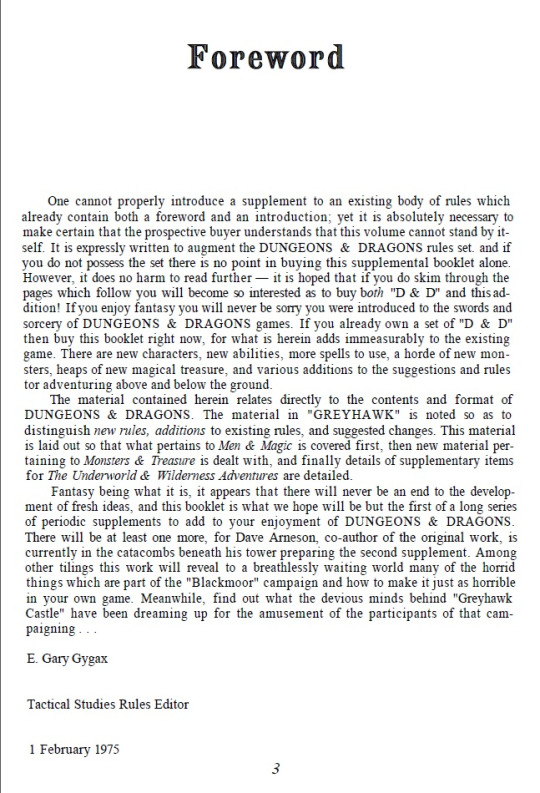
This is very much a supplement in the real sense of the word, it's just adding stuff to the original rules. Adding more monsters, more traps and more items above all. This also adds more classes and in this supplement you get the Thief and Paladin classes. Also added is the ever popular Half-Elf player race and the percentage number after your strength ability number if you had 18. This last one would eventually leave D&D with the third edition, but it did hit me in the nostalgic feels, as I started playing in the second edition with a barbarian with a strength score of 18 (57)... so something for us with some gray hair.
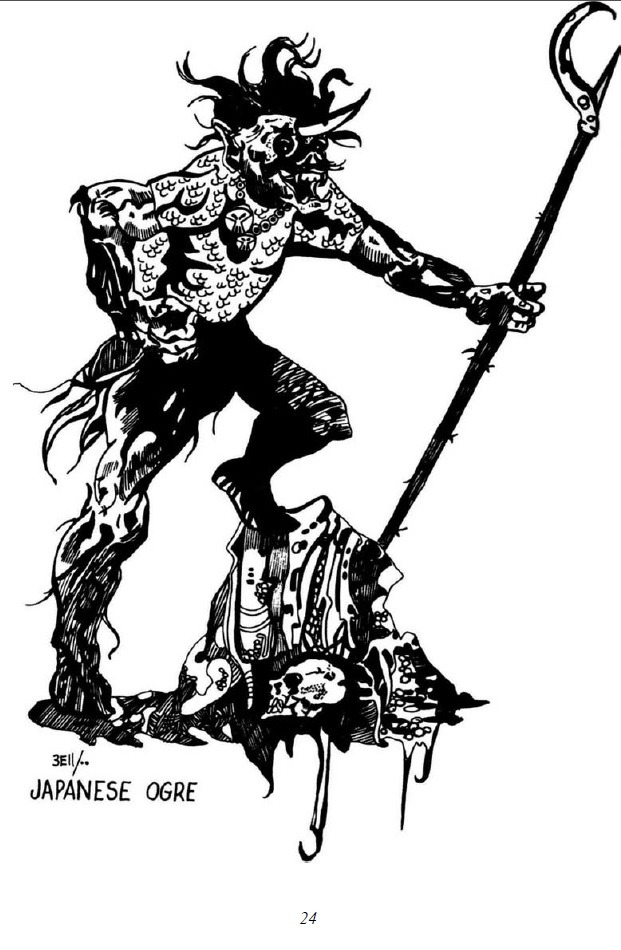
There is little reference to Greyhawk as a setting, really, with only a couple of off handed remarks as examples about Gygax's experience when running his game as well as a drawing of a stone face in Greyhawk castle, up to the wonderful standard of the illustrations in the original rules. Definitely worth taking a look at, but don't go in expecting some Castle Greyhawk lore.
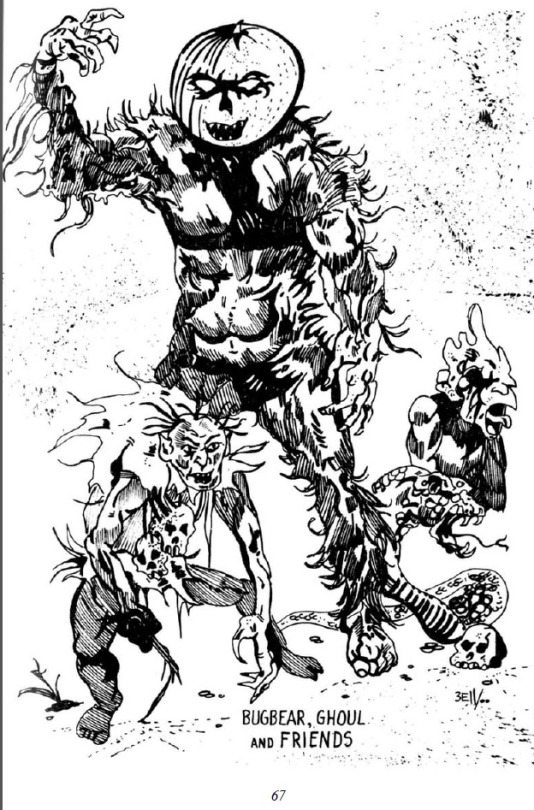
9 notes
·
View notes
Text
171. Various Authors - Dragon #63 (July 1982)
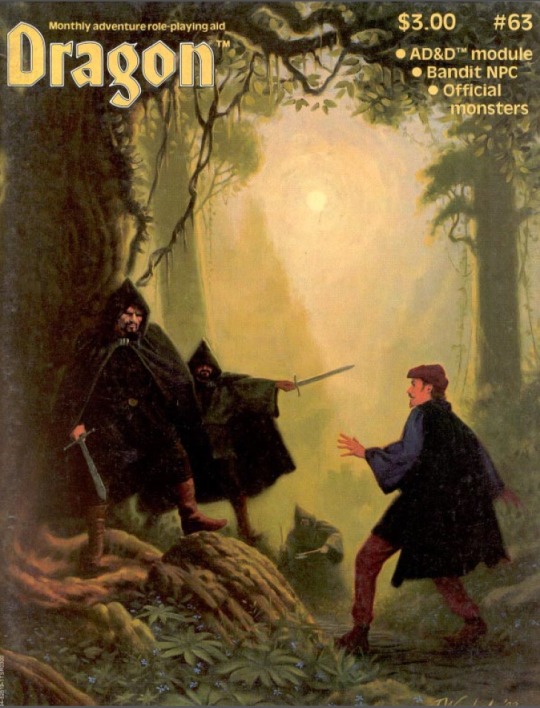
The contents of this issue of Dragon announce themselves in the cover, there is plenty of banditry and malfeasance inside this volume, which is heavily geared towards AD&D, which seems to be more and more the case as other games by TSR become more of an afterthought.
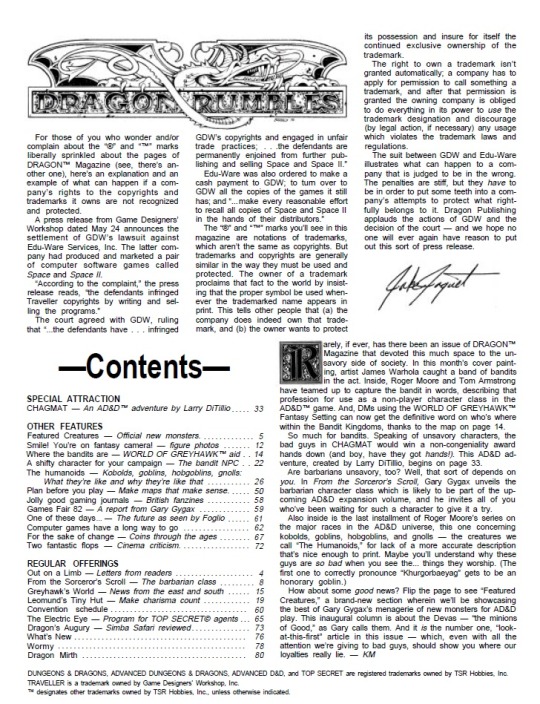
Gary Gygax has a big participation in this issue, contributing a number of different articles and starting out a column of "Featured Creatures", monsters for official use with AD&D, and a preview of the second volume of the Monster Manual that would be upcoming. In this issue we get the Devas. Gygax also brings us an article on the Barbarian and his work is also reflected in the Robert J. Kuntz penned article on events of the Eastern and Southern Flanaess, giving more depth to the World of Greyhawk. As usual this is an article very focused on military strength and movements, which isn't really what I'm most interested in.
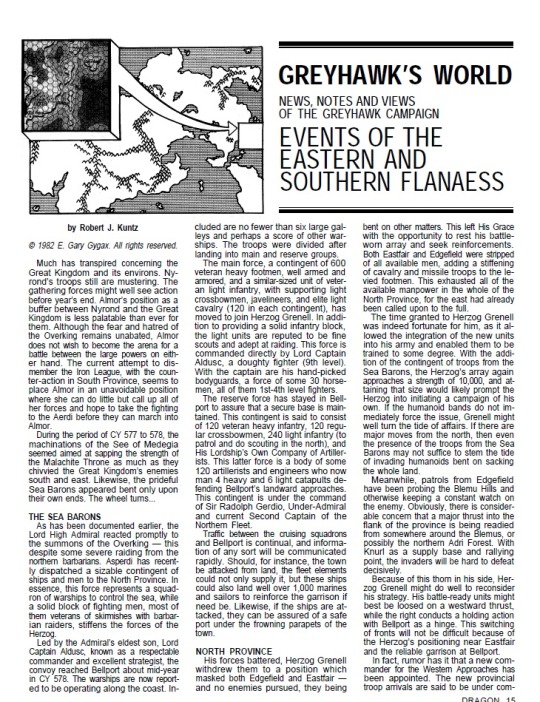
Len Lakofka writes an article on how to make Charisma matter, seeing as it is very often seen as a dump stat. Lastly Roger E. Moore gives two great articles, one on Bandits as NPCs and another finishing up the series on Races of D&D with an article on Humanoids (Goblins, Kobolds, Gnolls and Hobgoblins) and their gods. Ed Greenwood talks about how to create a campaign world, something he's uniquely qualified to do, and Gygax pans two movies in the critics sections, Conan the Barbarian (which is an awesome movie, sorry Gary) and The Sword and the Sorcerer, promising that D&D would have a "Star Wars or Indiana Jones" quality film by the mid of the 80s. Yeah... right.
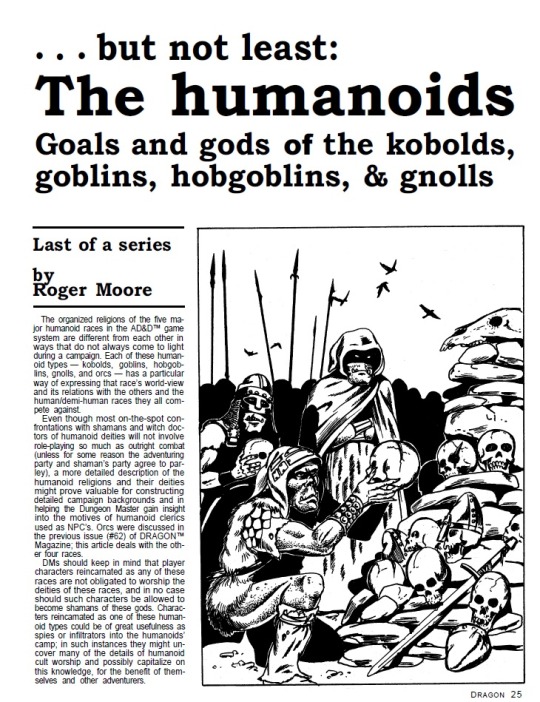
3 notes
·
View notes
Text
99. James M. Ward and Robert J. Kuntz - Deities & Demigods (1980)
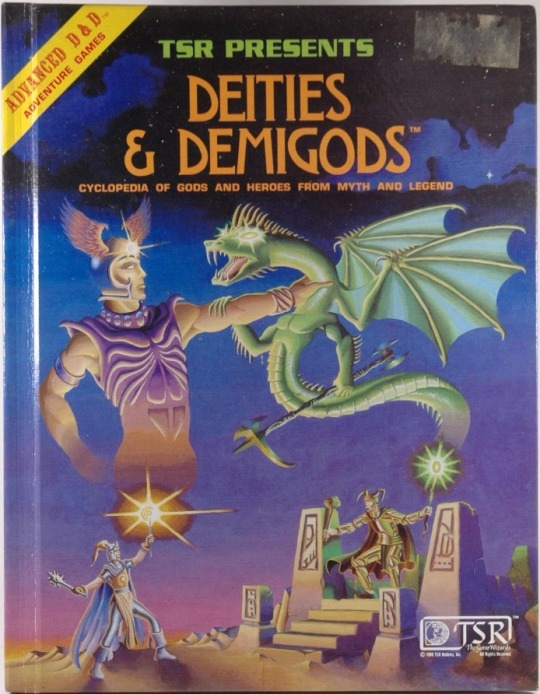
A much extended and updated version of the already existing Original D&D supplement (Deities, Demi-Gods & Heroes from 1976) dedicated mainly to giving descriptions and stat blocks for different gods and mythical characters from around the world, this is also a vast improvement on that pamphlet.
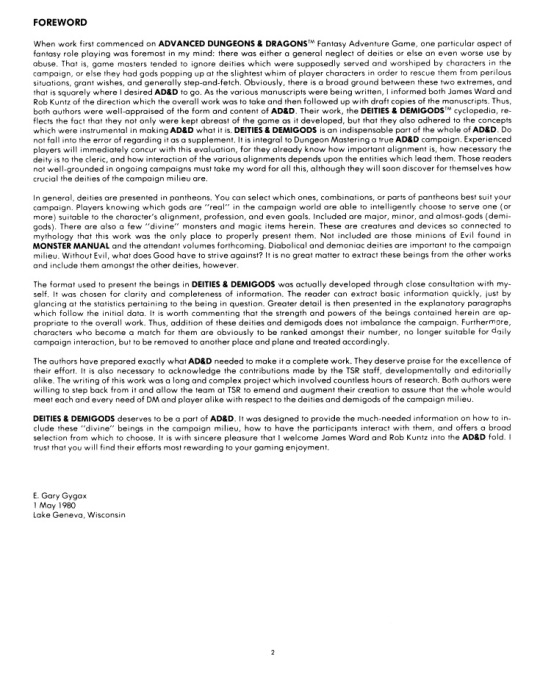
Before we talk about those improvements I have to say that I have some problems with vast sections of this work. Professionally I am a scholar of Religion with a PhD in the field, and seeing such simplifications of "American Indian Gods" or things like calling Kali a "Chaotic Evil" Goddess are beyond problematic, being pretty insulting to what are living religions followed by millions today. You will notice no stat blocks for Christ or the Christian God... well they should have had the same tact concerning other living religions. But it was the late 70s/early 80s and I understand that those kinds of considerations were far from the minds of the writers.

However, this is still a pretty interesting and useful book, particularly when it comes to fictional pantheons like the Lovecraftian or the Melnibonean pantheon, and even more interesting when we get some D&D original lore concerning non-human gods, here we have the first appearances of such staples as the orc god Gruumsh, the dwarven god Moradin or the elven god Corellon Larethian, as well as bringing in gods that first appeared in adventures such as the kuo-toan goddess Blibdoolpoolp from D2 Shrine of the Kuo-Toa. Full of illustrations, this is a pretty great book to leaf through.


4 notes
·
View notes